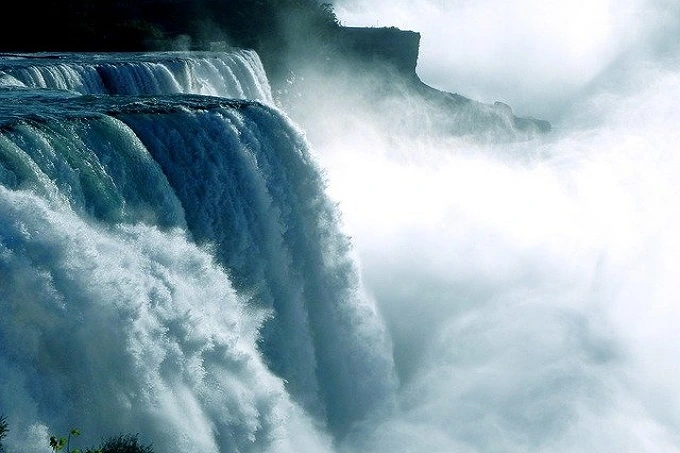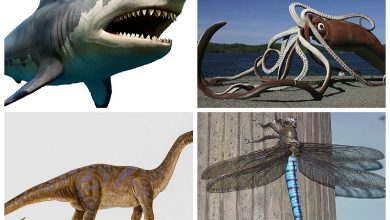Events that happened only once in the history of mankind

Certain events occur consistently, such as a solar eclipse, which each of us will be able to witness at least once in our lives and possibly even more frequently. Because of this, there is no novelty effect because the most interesting thing about seeing something for the first time is that you get used to it, and this does not cause as much of a storm of emotions as seeing it for the first time does. But there are some events that people have only ever witnessed once in the history of humanity. Some of them were beneficial, while there were others that, on the other hand, you would not want to survive even the enemy.
6 events that happened only once in the history of mankind
1. The passage of the Comet West

Since school, we have been well aware of Halley’s comet, which returns to the Sun every 75-76 years. Its most recent passage occurred on February 9, 1986, and the next time it will be observable will be on July 28, 2061. Before that date, it was not possible to see it. This may be an extremely rare occurrence that a person can only witness once in their lifetime. Still, another event is much more spectacular, something that even our distant ancestors could not fully appreciate.
For instance, Comet west, also known as C/1975 V1, 1976 VI, or 1975n among astronomers, tried to approach the earth in 1976, and its most recent perihelion occurred on February 25 of that same year. This was the comet’s closest approach to the earth ever. Its orbital period was estimated to be within 254,000 years, but later on, it was proposed that it could be as long as 558,000 years, and some studies have shifted this bar to 6.5 million years.
Even if we take the lowest of these estimates, there has only been one other time in human history that this comet has collided with earth. This is the case if we consider the first appearance of Homo sapiens to be 200,000 years ago as our starting point.
2. The victory of the cavalry over the fleet
The very description sounds absurd when one considers that the cavalry is riders on horseback who fight on land, whereas the fleet is comprised of ships that sail the seas. But in 1795, everything came together, and two armies that were fundamentally different from one another fought each other. It relates to the taking of the Dutch fleet that was stationed in Den Helder.
After that, French military forces walked into Amsterdam and decided to spend the winter in that city. The Dutch fleet was said to be moored a few kilometres north of Amsterdam, where the French general was told it was. In addition to this, he is unable to leave the port due to the extremely cold weather, which has caused the coastline to be covered in ice.
The general then ordered the cavalry, telling them to capture the Dutch fleet as it broke through the ice. Following thorough planning and preparation, the cavalry initiated the assault and successfully boarded the ships with the assistance of the infantry, resulting in zero casualties on either side. As a result, the cavalry was successful in seizing 14 ships of the line and several merchant ships for the first and only time in history.
3. Draining Niagara Falls

Over five hundred and fifty metric tons of water rush over Niagara Falls, one of the world’s most well-known and impressive waterfalls. The falls are located in North America
At least throughout the entirety of human history, there is no record of Niagara Falls ever being completely devoid of water. But in 1969, for the first time in recorded history, people witnessed two of the three waterfalls completely lose their flow of water. This was done on purpose to prevent collapses, which would have led to further erosion of the rocks.
Engineers installed a stone and earth dam on the Niagara River for drainage, and they rerouted some of the water flow along another branch of the river. Many artifacts and even the skeletal remains of two people were discovered at the waterfall’s base after it had stopped flowing.
4. Almost complete extinction of humankind
Even though the plague was one of the primary reasons for the deaths of many people, particularly during the Black Death pandemic, it was not a threat to our species’ continued existence even though it was responsible for the loss of hundreds of millions of lives.
The eruption of the supervolcano Toba, which took place approximately 75,000 years ago, was the only time in human history that the species was on the verge of extinction. The population of our ancestors was drastically cut down during this time because of the Ice Age that occurred on earth, so people survived as best they could under the circumstances. The temperature dropped even further due to the eruption, and there were only about ten thousand people left alive after it. If the consequences had been even slightly more severe, it’s possible that none of us would have been born.
5. The total and complete elimination of the smallpox

Despite the efforts put into fighting them, the majority of diseases either reappear in a different form or cause outbreaks in particular areas. But not smallpox because this highly contagious viral infection is the only one that humanity has been able to eliminate.
Late in 1977, Somalia reported what is believed to be the final case of smallpox caused by a natural outbreak. A laboratory was the place of the final case of smallpox infection that was ever documented during the summer of 1978. After that point, there were no more documented cases of smallpox due to widespread vaccination.
6. The journey to Uranus, Neptune, and Pluto
1977 marked the year that the Voyager 2 spacecraft was sent into space. In 1986, it arrived at Uranus after travelling a distance of 81 thousand kilometres from the planet. In 1989, it flew close to Neptune, or more accurately, he flew close to the satellites Neptune. Almost everything we know about these planets comes from the data collected by Voyager 2, which was launched in 1977.
Since it is possible to argue that the New Horizons spacecraft approached Pluto, an even more distant planet, in 2015, it should have also approached Uranus and Neptune around the same time. However, the planets do not appear to be in a linear arrangement, and New Horizons travelled a great distance away from them. Therefore, it is true that a close flyby of these gas giants has only ever occurred once in the course of human history. Humans have only ever “flown” to Pluto once when they directed the spacecraft known as “New Horizons” in that direction.




